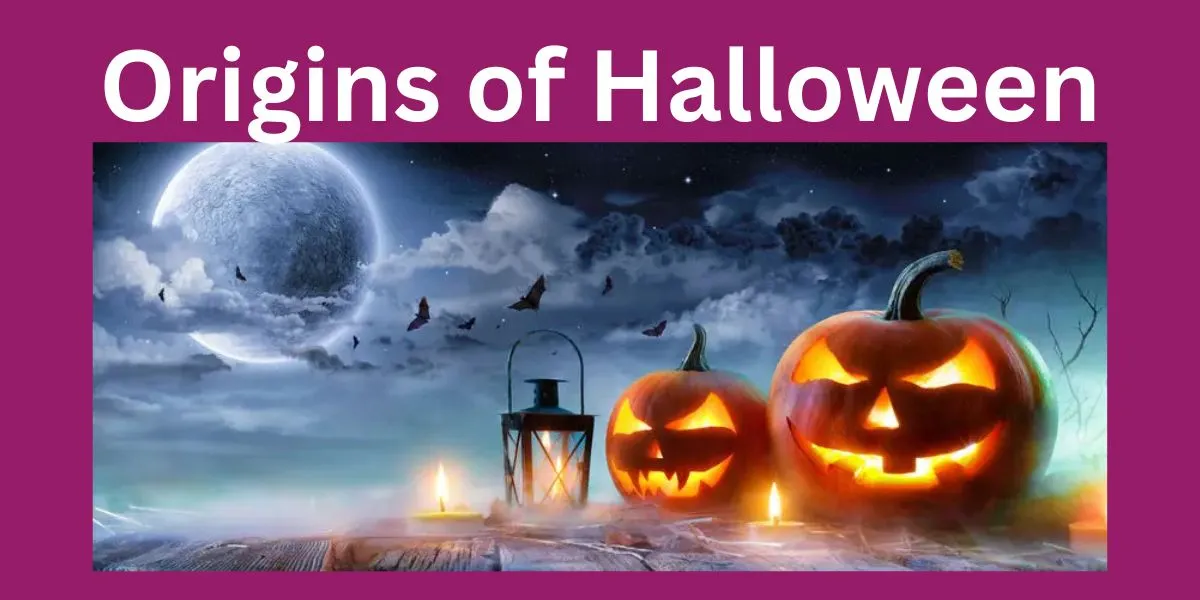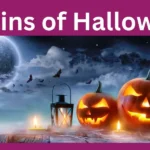Halloween – a night filled with spooky costumes, pumpkin-carving, and candy-collecting – has become one of the most celebrated events in many parts of the world. But have you ever wondered where Halloween actually comes from? What’s the story behind the costumes, the trick-or-treating, and the jack-o’-lanterns?
Let’s dive into the origins of Halloween, peeling back the layers of history to see how this celebration evolved into the fun and frightful holiday we know today.
The Roots of Halloween: Where Did it All Begin?
Celtic Festival of Samhain
The origin of Halloween can be traced back over 2,000 years to the ancient Celtic festival of Samhain (pronounced “sow-in”). The Celts, who lived in what is now Ireland, the UK, and northern France, celebrated their new year on November 1st. For them, this marked the end of the harvest season and the beginning of winter – a time often associated with death and darkness.
What Was Samhain All About?
Samhain was seen as a time when the boundaries between the world of the living and the dead blurred. On the night of October 31st, the Celts believed that the spirits of the dead returned to earth. To ward off these wandering ghosts, people would light bonfires and wear costumes to disguise themselves from any vengeful spirits.
Lighting the Bonfires
During Samhain, large bonfires were built to help protect the living from the dead. These fires also played a role in cleansing the community and ensuring that the gods favored them with good fortune for the coming year.
The Influence of Roman Traditions
The Romans Arrive
As the Roman Empire expanded and conquered Celtic lands, their traditions merged with those of the Celts. Two Roman festivals became particularly influential in shaping Halloween: Feralia and Pomona.
Feralia – Honoring the Dead
Feralia, a late October festival, was a Roman celebration that honored the dead. It was somewhat similar to Samhain, as it also involved making offerings to appease the spirits of the deceased.
Pomona – The Goddess of Fruit and Trees
The second Roman influence on Halloween came from the festival dedicated to Pomona, the Roman goddess of fruit and trees. Apples, which are strongly associated with Pomona, became intertwined with Halloween. This is likely where the tradition of apple bobbing originated!
The Spread of Christianity and All Saints’ Day
Christianity’s Influence on Halloween
As Christianity spread through Europe, it gradually absorbed or replaced many of the ancient pagan festivals, including Samhain. In the 7th century, Pope Boniface IV established All Saints’ Day on November 1st to honor Christian saints and martyrs.
All Hallows’ Eve
The evening before All Saints’ Day was known as All Hallows’ Eve, which eventually evolved into Halloween. Although All Saints’ Day was intended to replace Samhain, many of the old traditions survived, blending with Christian practices.
All Souls’ Day and Praying for the Dead
Later, in the 11th century, the Church added All Souls’ Day on November 2nd, a day specifically dedicated to praying for the souls of the deceased. This further strengthened the association between Halloween and the afterlife.
Halloween in the Middle Ages
How Halloween Evolved During the Middle Ages
During the Middle Ages, Halloween continued to evolve. In some parts of Europe, people began a practice called “souling.” This involved going door-to-door, offering prayers for the dead in exchange for food.
The Birth of Trick-or-Treating?
“Souling” is often considered a precursor to modern-day trick-or-treating. Poor children and adults would visit the homes of wealthier families, offering prayers for their loved ones in exchange for soul cakes – small pastries baked to commemorate the dead.
The Arrival of Halloween in America
Immigrants Bring Halloween to the New World
Halloween didn’t make its way to America until the mid-19th century, brought over by Irish immigrants fleeing the Potato Famine. In the United States, Halloween started to blend with other harvest festivals, growing into the lively celebration we recognize today.
The Transformation of Trick-or-Treating
By the 1920s and 1930s, Halloween had become more of a community-centered event in the U.S., complete with parades and parties. Trick-or-treating, as we know it, took off in the 1950s, when it became common for children to dress up in costumes and go door-to-door for candy.
The Origins of Halloween Symbols and Traditions
Why Do We Carve Pumpkins?
One of the most iconic symbols of Halloween is the jack-o’-lantern. This tradition is based on an Irish myth about a man named Stingy Jack who tricked the Devil and was cursed to roam the earth with only a carved-out turnip to light his way.
When the Irish immigrated to America, they found that pumpkins, native to the New World, were much easier to carve than turnips. And so, the tradition of carving pumpkins was born!
Why Do We Wear Costumes?
Wearing costumes on Halloween has its roots in the ancient practice of disguising oneself from spirits during Samhain. People would wear masks or costumes to avoid being recognized by ghosts who roamed the earth on Halloween night.
Bobbing for Apples – What’s the Story?
Apple bobbing, a fun Halloween party game, dates back to the Roman festival of Pomona. It was originally a way for young people to predict their future spouses. The first person to successfully bite into an apple would supposedly be the next to marry!
The Evolution of Halloween into a Global Celebration
H2: Halloween Around the World
While Halloween has its roots in Celtic and Roman traditions, it has now become a global phenomenon. Countries around the world have adopted their own unique versions of Halloween, blending local customs with the classic elements of the holiday.
Día de los Muertos – The Day of the Dead
In Mexico, Día de los Muertos, or the Day of the Dead, is celebrated around the same time as Halloween. This two-day holiday is dedicated to honoring deceased loved ones with vibrant celebrations, food, and offerings.
Japan’s Obon Festival
In Japan, the Obon festival also shares some similarities with Halloween. Obon is a Buddhist event that takes place in the summer, during which people honor the spirits of their ancestors through dances, rituals, and food offerings.
The Modern-Day Halloween: Fun and Frights
H2: Halloween Today
Today, Halloween is a beloved holiday in many parts of the world. In the U.S., it’s the second-largest commercial holiday, just behind Christmas. From costume parties to haunted houses, people of all ages take part in the fun and frights.
The Rise of Halloween in Pop Culture
Over the past few decades, Halloween has become a massive part of popular culture. Movies, TV shows, and books – from the classic horror flicks to modern-day spooky sitcoms – have made Halloween synonymous with thrills and chills.
Halloween’s Endless Appeal
Why does Halloween remain so popular? Perhaps it’s the chance to be someone else for a night, or maybe it’s the excitement of a little fright. Whatever the reason, Halloween’s blend of ancient tradition and modern-day fun continues to capture imaginations year after year.
Conclusion: A Holiday Steeped in History and Fun
From its ancient roots in Celtic tradition to its modern-day evolution as a global holiday, Halloween has a fascinating history that’s filled with rich symbolism and spooky fun. Whether you celebrate by dressing up in a wild costume, carving a pumpkin, or handing out candy, there’s no denying that Halloween offers a little something for everyone. It’s a holiday that invites us all to embrace both the mysterious and the playful sides of life.
FAQs
1. Why do we carve pumpkins for Halloween?
Carving pumpkins, or jack-o’-lanterns, originated from an Irish myth about Stingy Jack. The Irish used turnips initially, but when they immigrated to America, they found pumpkins to be a better choice.
2. What is the meaning behind trick-or-treating?
Trick-or-treating has its roots in “souling,” a practice where people would go door-to-door offering prayers for the dead in exchange for food.
3. How did Halloween come to America?
Halloween was brought to America in the 19th century by Irish immigrants who introduced many of the traditions we recognize today.
4. Is Halloween only celebrated in the U.S.?
No, Halloween is celebrated in many countries around the world, each incorporating local customs and traditions into the holiday.
5. What’s the history behind Halloween costumes?
Halloween costumes date back to the ancient Celtic festival of Samhain, when people would dress up to avoid being recognized by spirits roaming the earth.










